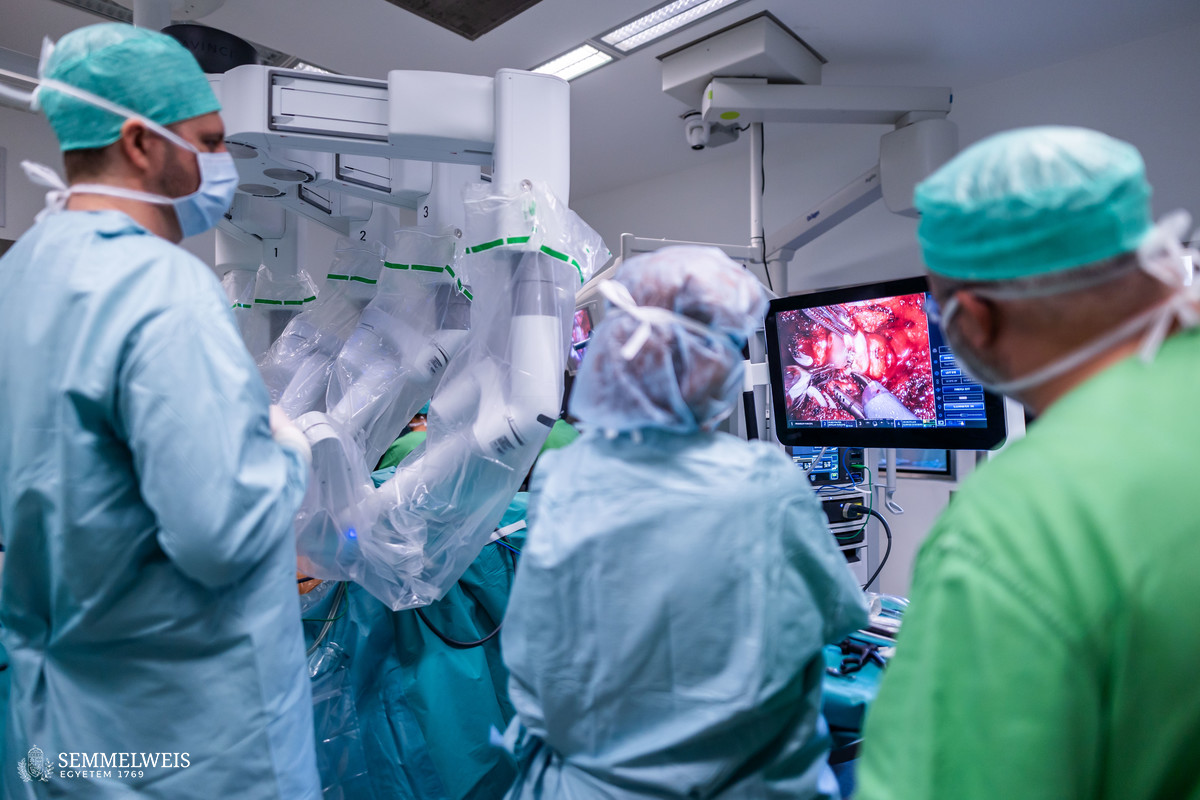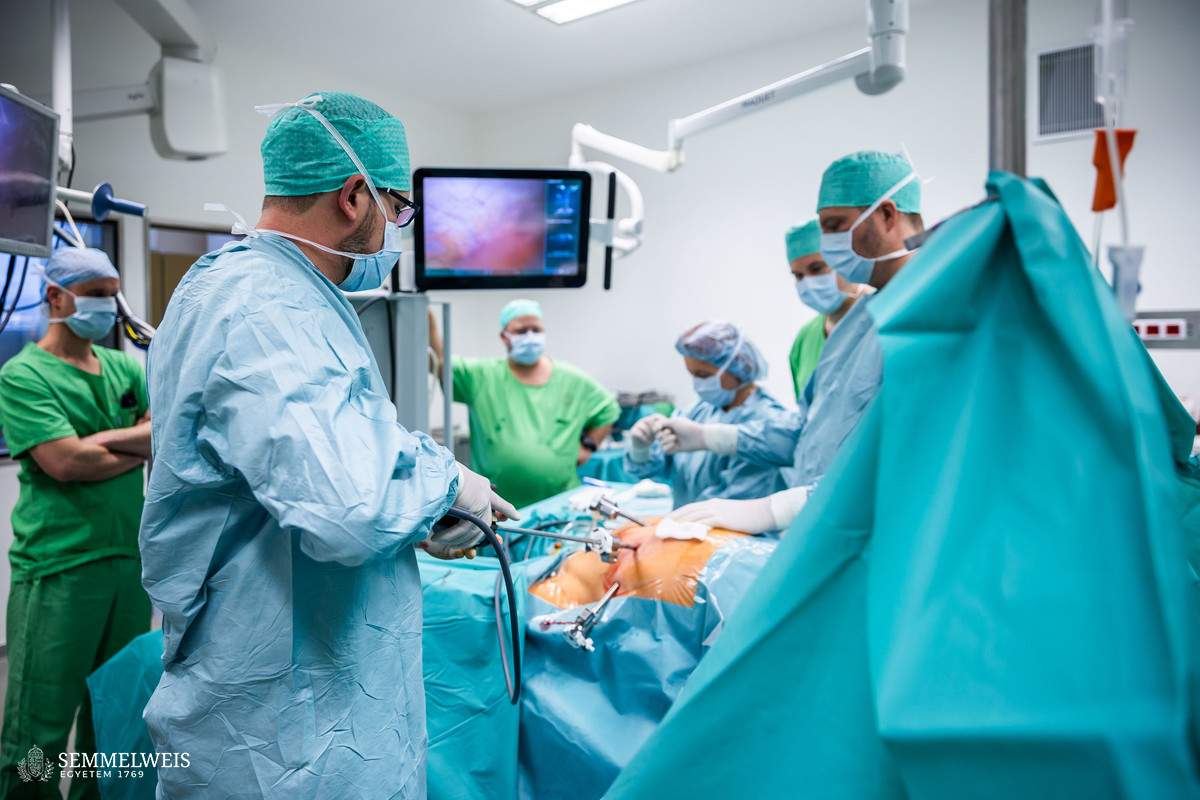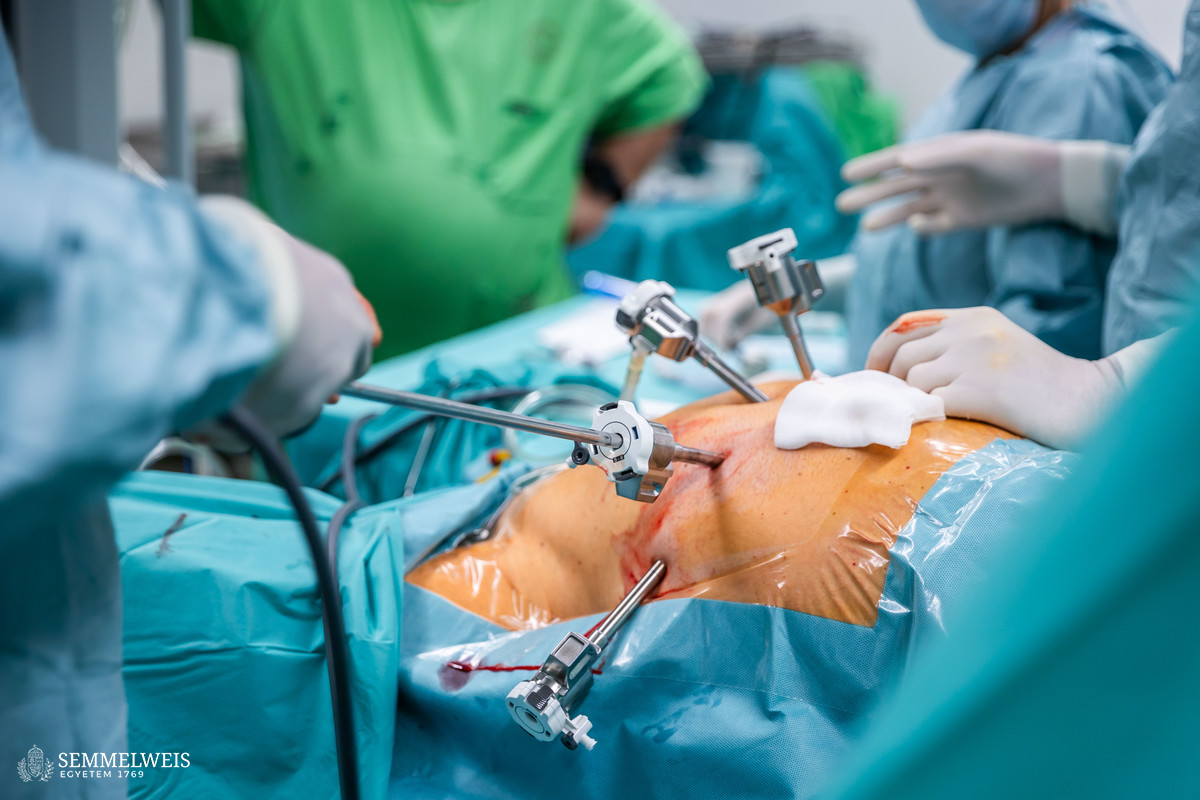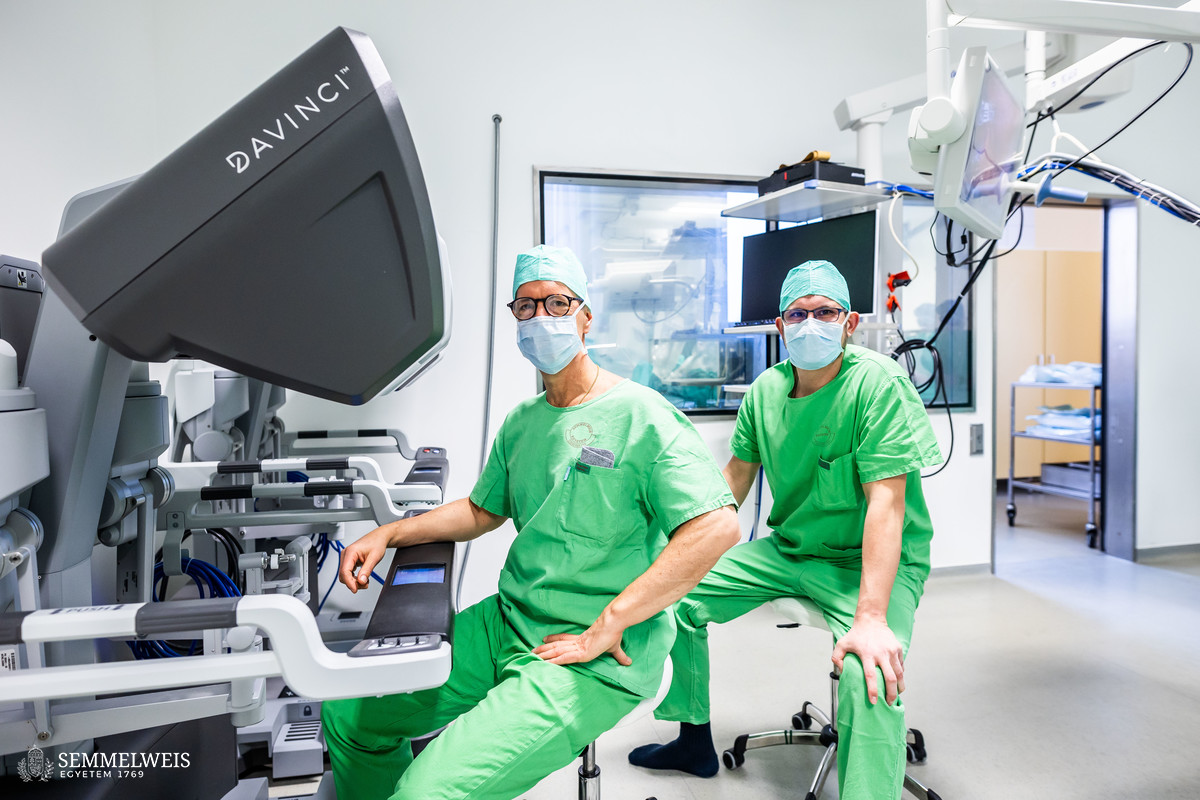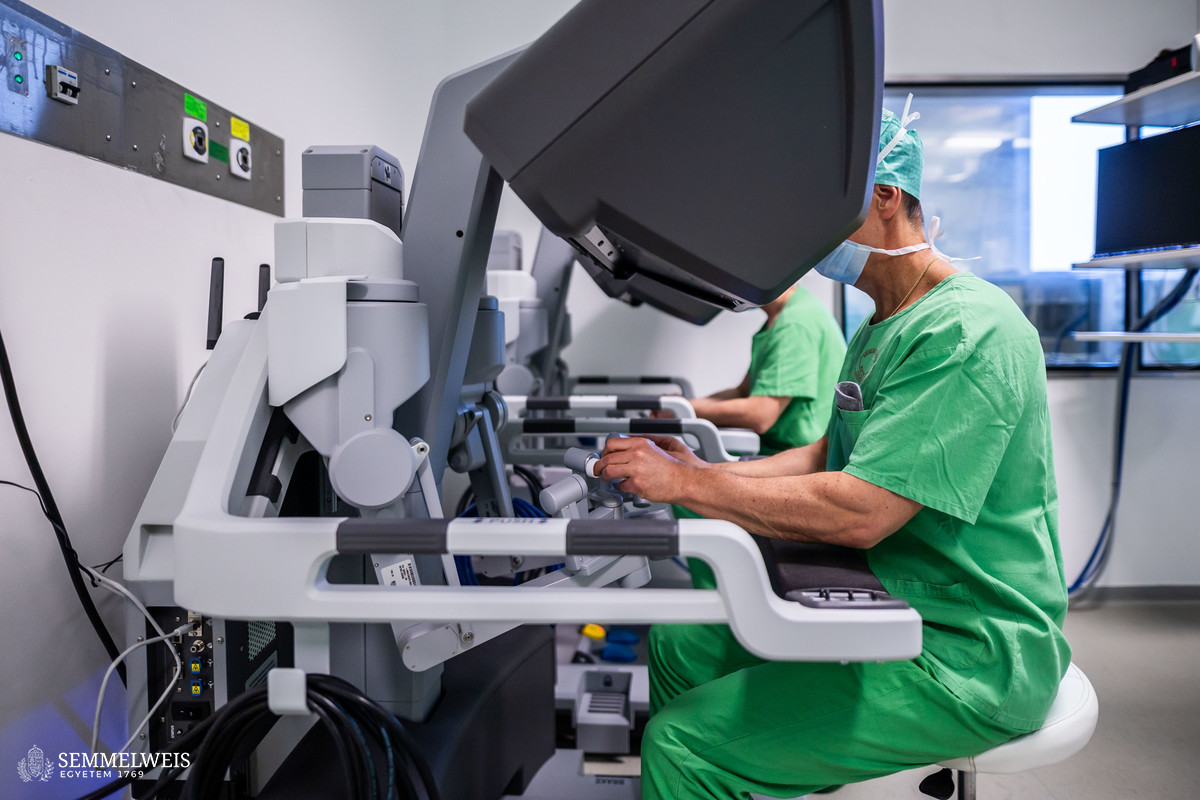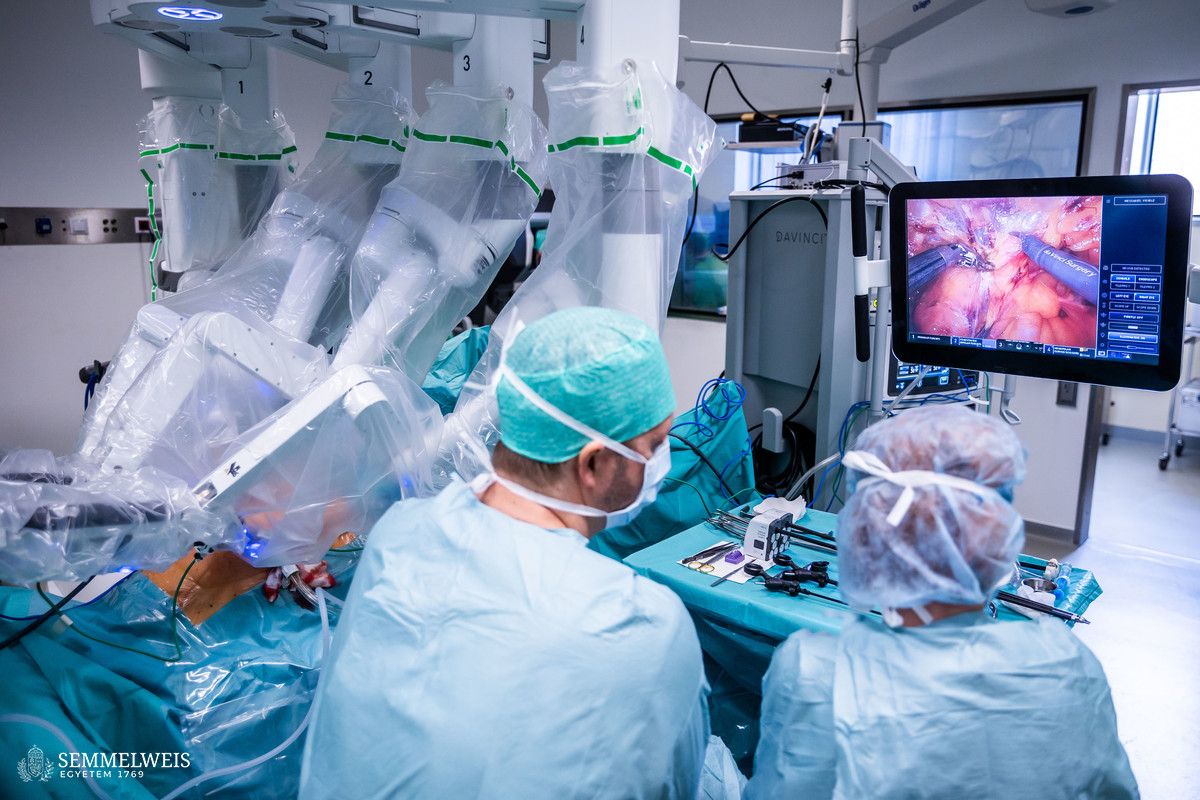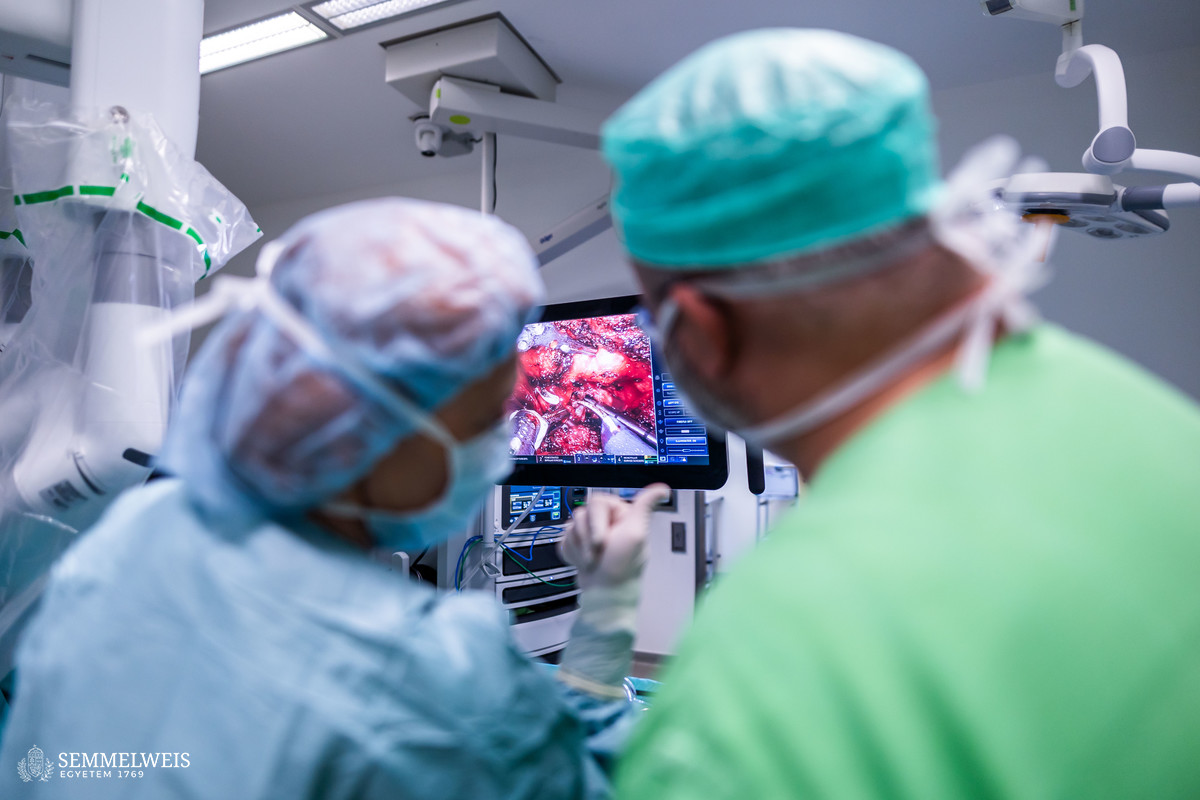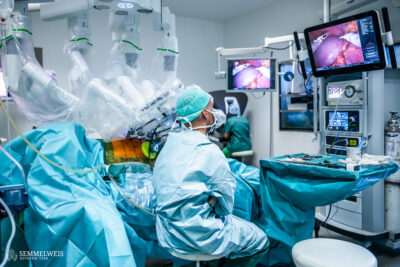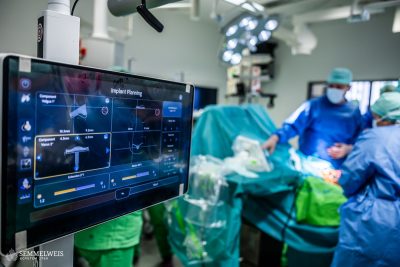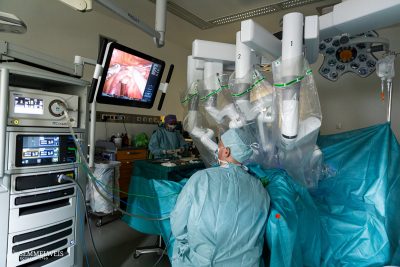In Hungary, radical prostatectomy affects nearly a thousand patients every year, and at Semmelweis University’s Department of Urology, one hundred such operations are performed annually for localized, i.e. non-metastatic prostate cancer. Kidney tumor resection is an even more common procedure, and the aim is to remove the tumor while preserving the function of the kidney – provided it has not spread to the entire organ.
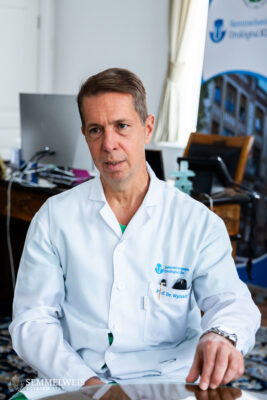 What the two procedures have in common is that the surgical area is hard to reach, deep inside the pelvis, and precision to the millimeter is of paramount importance. In the case of radical, i.e. total removal of the prostate, special attention must be paid to sparing the nerves and blood vessels in order to ensure that the ability to maintain continence and to erect remains unimpaired after the operation, explained Dr. Péter Nyirády, Director of the Department of Urology. Kidney tumor resection also requires utmost precision; the surgeon has to excise the tumor as accurately as possible, preserving and protecting the remaining part of the kidney.
What the two procedures have in common is that the surgical area is hard to reach, deep inside the pelvis, and precision to the millimeter is of paramount importance. In the case of radical, i.e. total removal of the prostate, special attention must be paid to sparing the nerves and blood vessels in order to ensure that the ability to maintain continence and to erect remains unimpaired after the operation, explained Dr. Péter Nyirády, Director of the Department of Urology. Kidney tumor resection also requires utmost precision; the surgeon has to excise the tumor as accurately as possible, preserving and protecting the remaining part of the kidney.
At Semmelweis University, these two operations are performed as robot-assisted surgery in the field of urology if the size, location and complexity of the tumor justify it, emphasized Dr. Péter Nyirády. He added that prostatectomy was also at the forefront of da Vinci procedures on an international level, as it was perhaps the best use of the advantages offered by the robot. At the clinic, robot-assisted surgery for locally advanced prostate cancer can also be performed, in which case extended lymph node removal is also required, he noted.
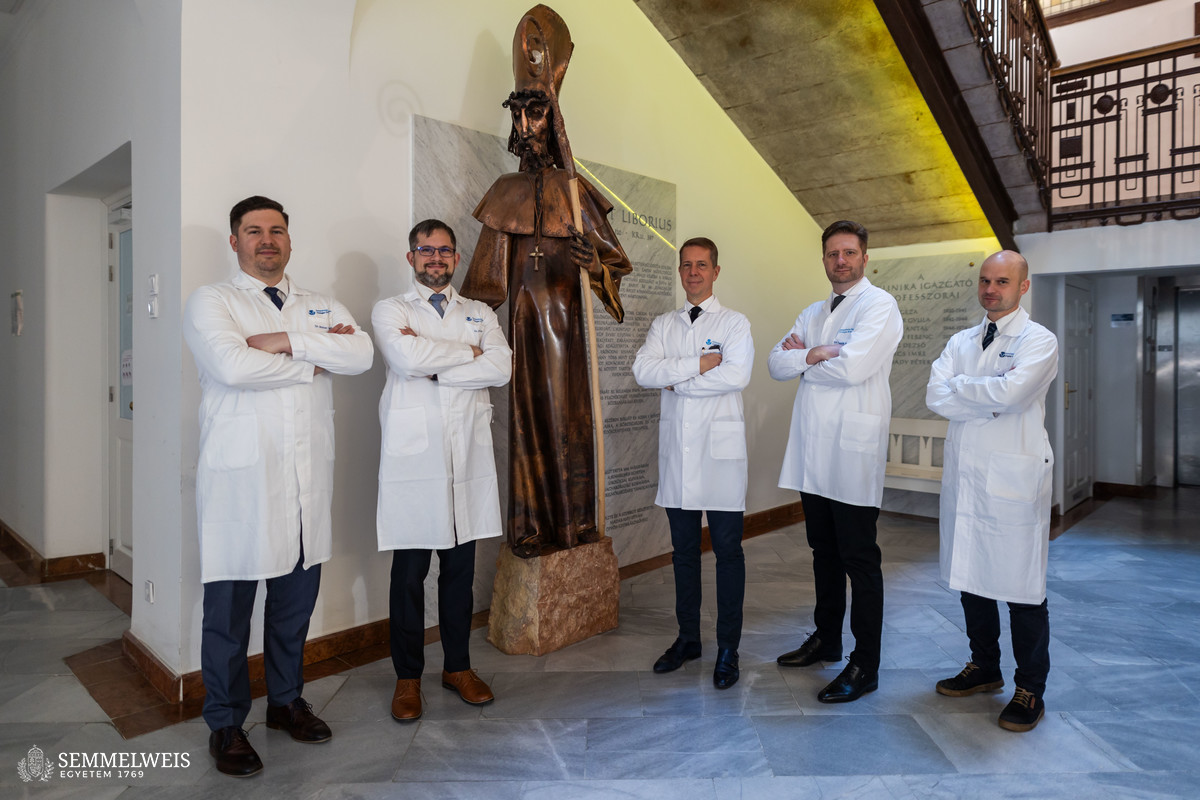
The first da Vinci robot-assisted urological surgery was performed on June 22, 2022, and 150 such operations have been performed since then. Based on the experience of the specialists at the Department of Urology, robot-assisted surgeries significantly reduce blood loss and thus the need for transfusions as well as pain relief, thus speeding up recovery. Furthermore, patients are usually discharged home a day earlier compared to traditional surgery, on the second day after the procedure.
Dr. Péter Nyirády pointed out that the most prominent and innovative role of robotics was in education and training of young professionals. With robots, it is possible to train a surgeon to the highest standards in a much shorter time, while it takes considerably longer to gain extensive experience with traditional methods (laparoscopy, open surgery).
The da Vinci Surgical System at Semmelweis University
The da Vinci Surgical System was inaugurated in June 2022 at Semmelweis University. The fourth-generation da Vinci Xi robot, representing the most advanced technology, was installed at the University’s Department of Surgery, Transplantation and Gastroenterology (STéG). The robotic technology is currently used mainly in abdominal surgery, gynecology, and urology. It is also used in education thanks to its dual-console design. During the robot-assisted procedure, the console surgeon is seated in the control unit a few meters from the operating table, however, it is essential that there is no element of the procedure that the surgeon does not control. The four-armed robot above the operating table is controlled by a total of seven pedals and two masters (joysticks).
Pálma Dobozi
Translation: Judit Szabados-Dőtsch
Photos by Bálint Barta – Semmelweis University
